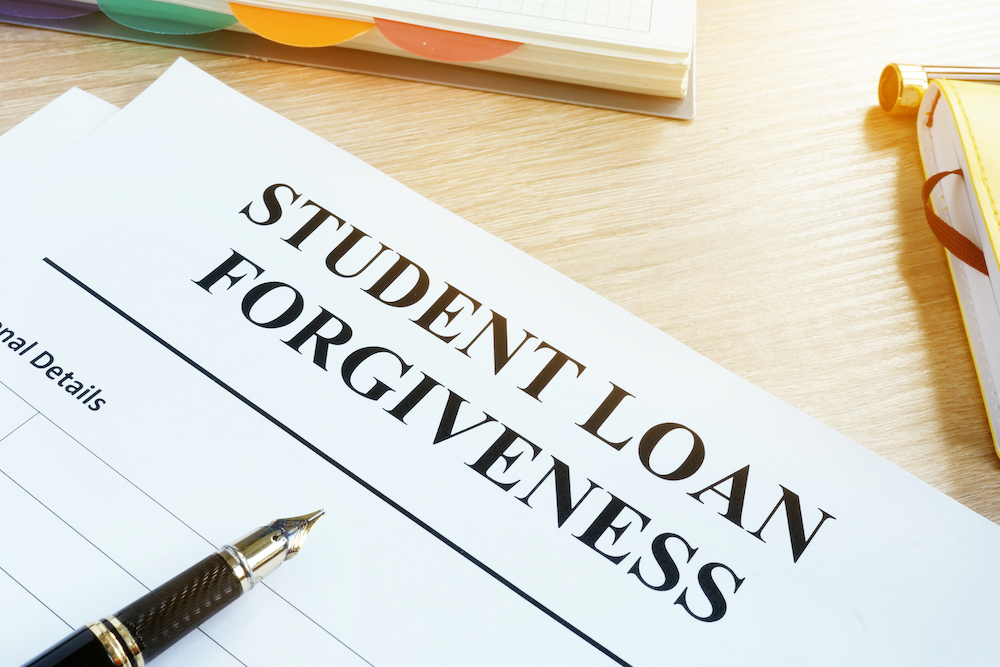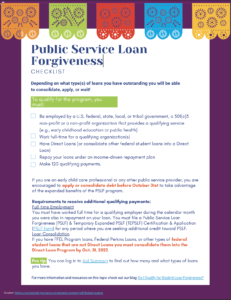
The cost of higher education leaves a lifelong financial burden on individuals and families. Nearly 45 million individuals have borrowed $1.6 trillion from the federal government to pursue higher education. Now, qualifying borrowers can be alleviated of some of this debt, opening up new opportunities for themselves and their families.
Recently, the Biden Administration announced that student aid borrowers who earn less than $125,000 per year, or households earning less than $250,000, are eligible for $10,000 in loan forgiveness. Borrowers who received a Pell Grant can also qualify for up to $20,000 in forgiveness.
Some borrowers may be automatically eligible for the relief if their income data is available to the U.S. Department of Education. If your income data isn't on file with the Department of Education, you can apply for the relief through this application portal.
What you need know about student loan forgiveness:
- This one-time student loan forgiveness grant reimburses borrowers up to $10,000
- Nearly every type of federal student loan qualifies for forgiveness, including direct subsidized or unsubsidized loans and graduate or parent PLUS loans.
- You can still qualify for the forgiveness if you never finished your degree or are still in school.
- You are still eligible if you used federal student loans to pay for community college, a trade program, professional degree, or other alternative certification.
- You can sign up on the U.S. Department of Education’s website for updates on the program.
Public Service Loan Forgiveness Program
The Public Service Loan Forgiveness (PSLF) program is separate from the recently announced one-time loan forgiveness program. PSLF is a longstanding program that was created in 2007 to incentivize more individuals to work in public service (i.e. as an early childhood educator, teacher, or non-profit employee) by erasing some of their student debt.
As a result of the pandemic, the Department of Education made changes to the PSLF program that allowed borrowers to receive credit for past periods of repayment that would otherwise not qualify for PSLF.
If you are an early child care professional or any other public service provider, you are encouraged to apply or consolidate debt before October 31st to take advantage of the expanded benefits of the PSLF program.
To qualify for the program, you must:
- Be employed by a U.S. federal, state, local, or tribal government, a 501(c)3 non-profit or a non-profit organization that provides a qualifying service (e.g., early childhood education or public health)
- Work full-time for a qualifying organization(s)
- Have Direct Loans (or consolidate other federal student loans into a Direct Loan)
- Repay your loans under an income-driven repayment plan
- Make 120 qualifying payments.
Learn more and see if you qualify for PSLF by visiting: https://studentaid.gov/announcements-events/pslf-limited-waiver
Other useful links for PSLF:
- FAQs: The Limited Public Service Loan Forgiveness Waiver for the Human Services Workforce
- ACF: What do Early Childhood Educators Need to Know About Public Service Loan Forgiveness
- ACF Public Service Loan Forgiveness for Human Services Workforce landing page
- PSLF Waiver Offers Way to Get Closer to Loan Forgiveness
- Department of Education PSLF Help Tool


